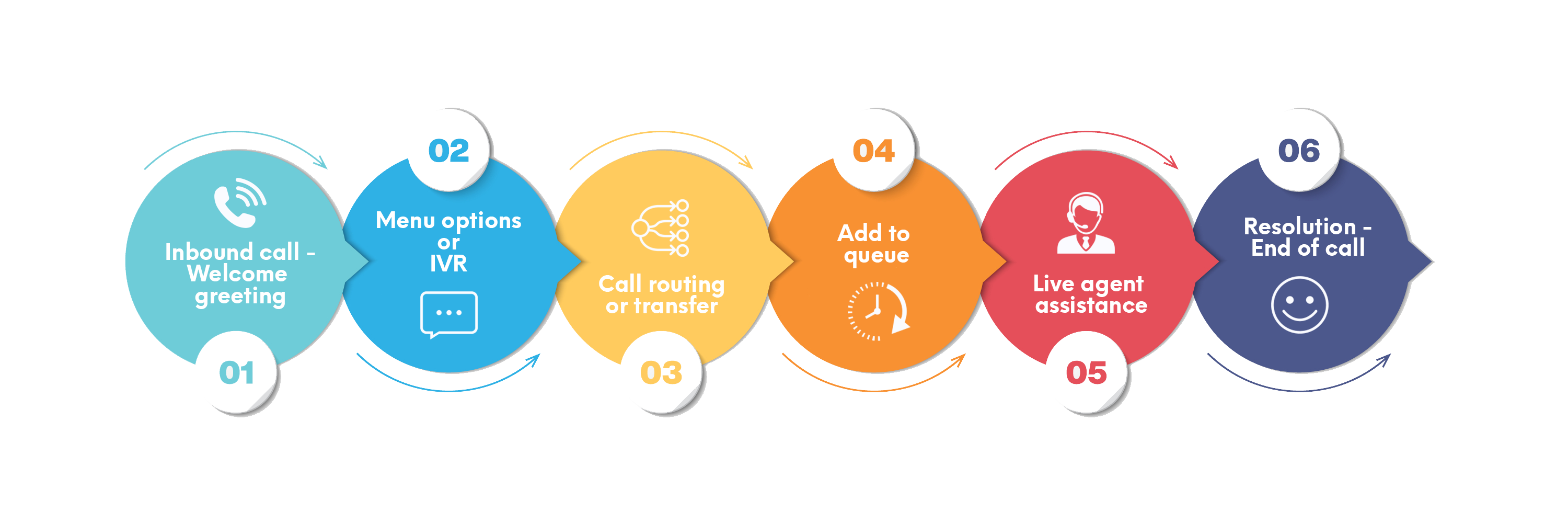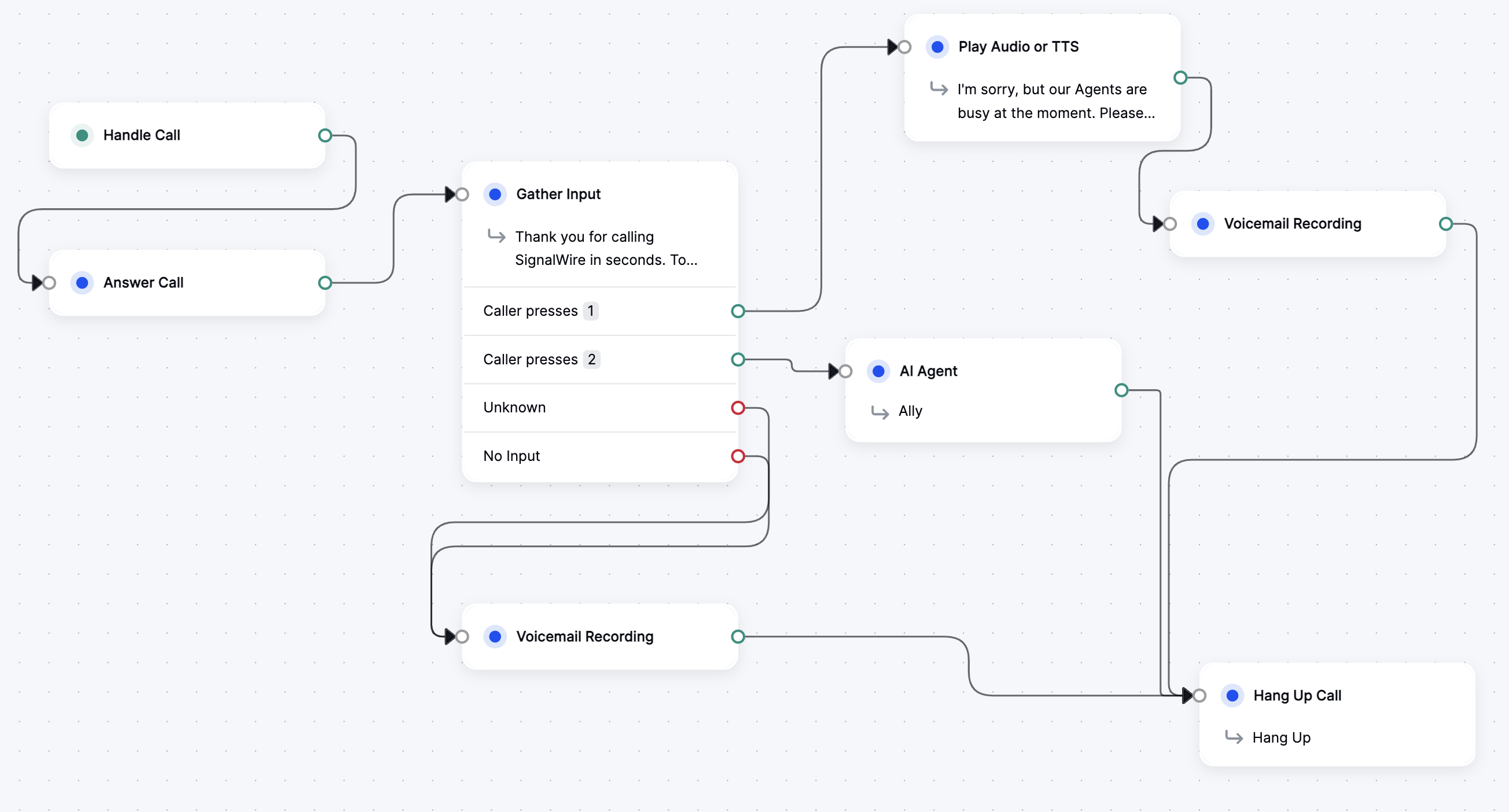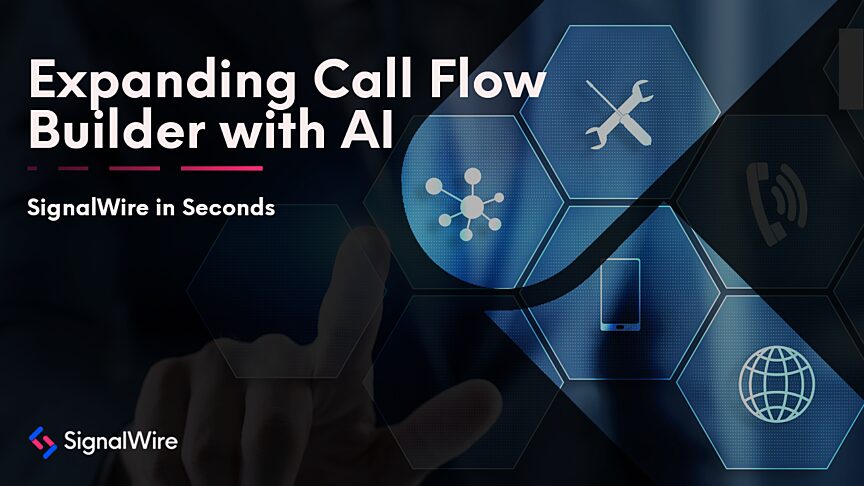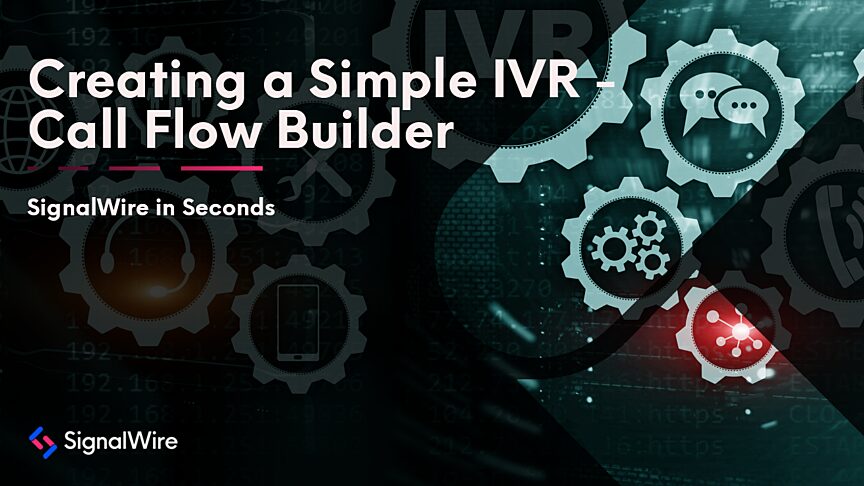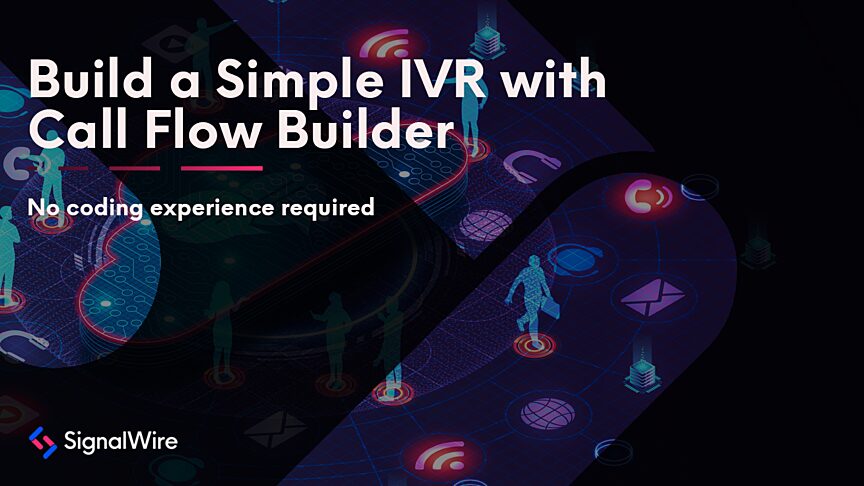What is a Call Flow?
Call flows are the start of a customer journey, and the blueprint for the route your company’s inbound calls follow. When someone calls in, they need to receive a good first impression of your business. From there, your goal is to get them where they need to go as efficiently as possible.
Simply put, a call flow is the path a phone call takes from initiation to conclusion. This includes every step along the way, including automated responses, menu options, transfers, and the eventual resolution of the call.
Call flows can be as simple as a customer calling in and being connected with a receptionist who can then answer questions. But if there are many paths a caller can take, the more intricate and complex the conversational flow will become.
Maybe you need an interactive voice response (IVR) system with custom menu options, or maybe you want an AI agent to take over the call before anything else. In this post, we’ll go over our essential tips for designing efficient call flows and how you can get started.
Elements of a Call Flow
A call flow will often follow a similar pattern - a welcome message, call transferring, live agent interaction, and resolution. More complicated call flows will contain more complex webs of call transfers, queuing, or call backs.
Depending on the needs and size of your organization, call flows will vary in complexity. A linear call flow, for example, is a straightforward “press one for support, two for sales,” style of phone tree.
Skills-based call flows route to different agents of varying specialities, which might be necessary if you have many different products with specific troubleshooting needs.
Round-robin call flows evenly distribute calls based on how many calls different agents have taken, which is useful if everyone is working on a similar product.
These call flows are not necessarily interchangeable, so it’s important to evaluate the needs of your customers. Not every phone system will need a queue, for example. Typically, however, call flows are made up of the following elements:
Welcome Greeting
Every call should begin with a welcoming message, setting the tone for the interaction ahead. This initial greeting can be personalized based on various factors such as time of day, caller's location, specific promotions, or holiday hours.
IVR
IVR systems route callers to the appropriate department or service. Through a series of automated prompts and voice recognition technology, IVRs enable callers to navigate to the relevant individual or department. IVRs can be designed with pre-recorded messages or text-to-speech technology.
Call Routing and Transfers
In scenarios requiring specialized assistance, calls may be routed or transferred to designated agents. Efficient call routing ensures that callers are quickly connected with the most qualified personnel to address their inquiries.
Queue Management (optional)
In instances where all agents are busy assisting other callers, queued callers are informed of their position and estimated wait times. Effective queue management ensures a balance between minimizing wait times and optimizing agent productivity.
Live Agent Interaction
Once connected with an agent, the caller's needs are addressed through personalized assistance. Depending on the department, agents rely on comprehensive training, scripts, and access to relevant information to deliver timely and satisfactory resolutions.
Resolution
The ultimate goal of any call flow is to resolve the caller's issue or fulfill their request. Whether it involves providing information, troubleshooting technical issues, or processing transactions, the resolution phase should happen as early in the call flow as possible.
Tips for Optimizing Your Call Flow
An optimized and efficient call flow is essential. Poorly-designed phone systems can have serious consequences that leave your callers fleeing to the competition. You want callers to experience the least amount of resistance possible, making it quick and simple to get where they need to go.
If you’ve ever gotten stuck in a loop with a phone tree that keeps repeating: “Sorry, I didn’t catch that,” then you already know just how much frustration can come from a poorly-organized call flow. By guiding callers to their desired destination efficiently, an optimized call flow minimizes the time, effort, and resources required to resolve inquiries or access services. Here are a few tips for planning your call flows:
Determine the Caller Journey
Appointment scheduling? Order tracking? Paying a bill? Troubleshooting? What is every possible route your caller can take, and how quickly can that issue realistically be resolved?
Live agents need to be available for those issues that don’t fall into broader paths, or to handle issues that require untraditional solutions. No matter what, don’t let your callers get stuck in a loop on a phone tree and waste their time.
Simplify Menu Options
Limit the number of menu options presented to callers to avoid overwhelming them. Focus on the most common inquiries or services and provide concise, easy-to-understand choices.
Only use a linear call flow strategy if you have a couple of options to list. Don’t make your callers sit through a long list of menu options that are irrelevant to their call.
Implement Natural Language Processing (NLP)
If you do have many menu options and potential caller routes, integrate NLP technology, or something like an AI agent, to enable callers to interact with your IVR in plain language. The more human-like the voice, the more natural customer interactions will be.
This allows for more intuitive interactions and reduces the need for rigid menu structures. The more options a caller has, the more important natural language becomes. “Press one for sales, two for support, and three for the front desk,” is about as complicated as you want it to get if you’re building a linear call flow.
Offer Self-service Options
Empower callers to resolve simple inquiries or perform transactions independently through self-service options such as account balance access, bill payments, or appointment scheduling. Tools like AI agents can help you achieve customer self-service while offering caller assistance.
Personalize the Experience
Utilize caller data to personalize the call flow. For example, greet returning customers by name or offer tailored menu options based on previous interactions. If you use technology like an AI agent for managing your call flows, you can retrieve customer data from backend CRM systems to achieve this kind of personalization.
Keep the Queue Short
Hold times should be as brief as possible. If callers are going to be stuck with long wait times, it’s important to optimize your call flows efficiently. Using AI tools to gather data or to offer up-front troubleshooting can help to offload time from live agents. But if long wait times are unavoidable, offering callers a callback instead of elevator music may be the best option.
Provide Exit Options
Allow callers to easily exit the IVR and speak with a live agent if they need human assistance or cannot find the information they need. Nothing is going to be more frustrating than exclaiming: “Speak to a live agent!” over and over again while the IVR responds: “Sorry, I didn’t quite catch that.”
Regularly Test and Update
Continuously monitor performance metrics, record your calls, and collect feedback from callers to identify areas for improvement. Regularly update and test the call flow to reflect changes in services, promotions, or customer preferences. As your business grows, scale your phone trees appropriately, and keep an eye on how many calls are coming in.
Create Effective Call Flows with SignalWire Call Flow Builder
Recognizing the significance of an efficient and customer-friendly call flow is a strategic investment in customer satisfaction, loyalty, and the overall health of a business. SignalWire's Call Flow Builder is a dynamic visual tool for quickly designing and maintaining call flows.
With a user-friendly drag-and-drop interface, Call Flow Builder enables you to create and update custom call flows with no code. When building with SignalWire’s visual interface, you can unlock:
Visual Simplicity
SignalWire's Call Flow Builder provides a user-friendly interface, allowing anyone of any technical background to design intricate call flows with ease. The drag-and-drop UI makes it easy to create dynamic, multi-step interactions without the need for complex coding or technical expertise.
Integration with AI
One of the standout features of Call Flow Builder is its ability to integrate with AI agents. Businesses can leverage AI-powered capabilities to fetch customer data from backend systems, transcribe calls for convenient record-keeping, and offload repetitive tasks from live agents. This elevates the customer experience beyond the limitations of traditional IVRs, creating a more intelligent and responsive system.
Scalability and Adaptability
Call Flow Builder is designed with adaptability and scalability in mind. You can easily modify call flows in response to changing needs without the need for extensive IT involvement. This adaptability ensures that the system can grow alongside the organization, staying ahead of evolving customer expectations.
Experiment with various configurations and seamlessly implement changes without disrupting ongoing operations. This ensures that your call flows remain up-to-date and responsive to customer needs, making testing and updating a breeze.
Low-code Solutions
Call Flow Builder offers a low-code solution that empowers both developers and non-developers alike. No matter your technical background, the intuitive interface of Call Flow Builder allows you to build sophisticated phone trees with ease.
Start Building Today
By simplifying the creation and management of call flows while offering advanced capabilities, Call Flow Builder will help you leave a lasting impression on customers from the first interaction.
Don't let outdated phone systems hinder your customer service efforts. Embrace the future of customer communication with SignalWire's Call Flow Builder. Sign up for a SignalWire space today and transform basic conversations into lasting connections.
